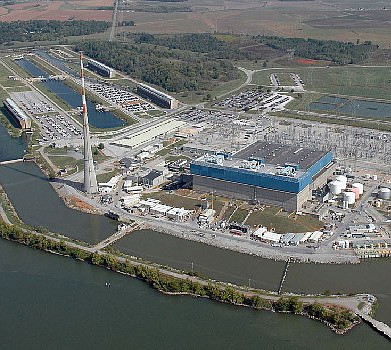For at least the ninth time in three years, the Tennessee Valley Authority has been cited by federal regulators for violating safety standards at one of its three nuclear plants that operate in a half circle around Chattanooga.
Perhaps we just hear it so much that we tune it out.
Perhaps Tennessee is so engrained in the nuclear tradition - Oak Ridge, after all, is basically where nuclear power began - that we just automatically dismiss it.
Perhaps we shouldn't. Perhaps we need to look again without the rose-colored glasses.
No matter how many times TVA and our politicians and the nuclear power industry chant that nuclear power is clean, safe, affordable energy, we shouldn't just smile and nod.
It is none of those things.
Energy is not clean when its waste doesn't decay for hundreds of years and there is no permanent storage place for it. Right now, TVA stores more than 3,262 metric tons of highly radioactive spent fuel at its three nuclear plants in Soddy-Daisy, Spring City, Tenn., and Athens, Ala.
Energy is not affordable when building a nuclear plant automatically translates to cost overruns and delays: TVA's Watts Bar Unit 2 has doubled in cost and is three years delayed. And did we mention that major banks won't finance nuclear power plants anymore because they are so financially risky? That's why there are government subsidies for nuclear energy.
And energy is not safe when human error introduces so many problems that TVA has the worst rating in the country at its Browns Ferry Nuclear Plant, and one of the worst fleetwide, when you tally up all of safety findings of recent years.
Of the nation's 101 operating commercial nuclear reactors, 23 are currently receiving extra oversight from the Nuclear Regulatory Commission because of safety problems. Six of those 23 - more than a fourth - are our TVA reactors. And all of TVA's reactors are on that extra-oversight list.
But it isn't just human error that throws a wrench in nuclear power plant operations.
In Japan, an earthquake and tsunami began the domino-effect downfall of reactors at the Fukushima plant in March 2011.
Now up to 100,000 people can't go home again.
Think about that.
The earthquake didn't disable the plant. The tsunami washed away the equipment to cool the reactors and the spent fuel pools where waste was stored.
The result - over days - were meltdowns that played out over national television.
Now the news camera lights are turned off, but the site continues to leak radiation into the air and into the Pacific Ocean. Steam found in a reactor building there this week prompted renewed concerns that radiation may be spiking there again. The plant's operator denies it, saying rainwater sitting on the reactor was the source of the steam.
Whatever the truth, the steam was one more reminder of the continuing precariousness at the crippled facility two years after the meltdowns. Direct access to the reactors is extremely difficult because radiation levels make it unsafe for people to go near. A worker watching a camera feed of the site spotted the steam, according to news reports.
In recent months, a series of radiation-contaminated water leaks there renewed concerns in Japan, as did a blackout caused by a gnawing rat that left cooling pools without power for more than a day.
The company, TEPCO, has admitted in recent weeks that water and soil samples taken at Fukishima are showing high readings for potentially dangerous and cancer-causing isotopes, including caesium-137, tritium and strontium-90.
That couldn't happen here?
We don't have tsunamis, but we sure have tornadoes. In April 2012, tornadoes very nearly targeted Brown's Ferry, and did shut it down after twisters made bowties of the massive power towers that carry electricity away from the plant.
With no where for the power to go, the plant essentially blew a fuse and went into automatic shutdown - as it should. The trouble was, as at Fukushima, there was no power to cool the reactors and spent-fuel pools. Fortunately unlike at Fukushima, the diesel generators and the fuel to run them were not swept away, so the three reactors at Brown's Ferry were cooled with diesel generators for a week before TVA was able to get emergency power lines back into the plant.
If there is a silver lining to the fact that we are living close to six of the nation's least-safe reactors, it is that they are getting most of the federal reactor scrutiny right now.
Another downside is that we ratepayers are paying for that extra scrutiny - to the tune of millions of dollars a year when NRC sends a bill to TVA for the inspection oversight cost: $274 an hour for every inspector's time.
Browns Ferry for more than a year has been under what NRC calls a "red" finding - the highest safety flag NRC makes, and only the fifth issued nationwide. The only NRC action tougher than that is ordering the plant's shutdown.
Typically the costs for increased inspections at a red-flagged plant have been about $200 million, according to nuclear industry experts.
In reality, that's a small cost.
Just ask the tens of thousands of Japanese people who can't go home again and can't go open their businesses again or grow their crops.
We can still go home. And we can demand cleaner, safer more affordable energy.

